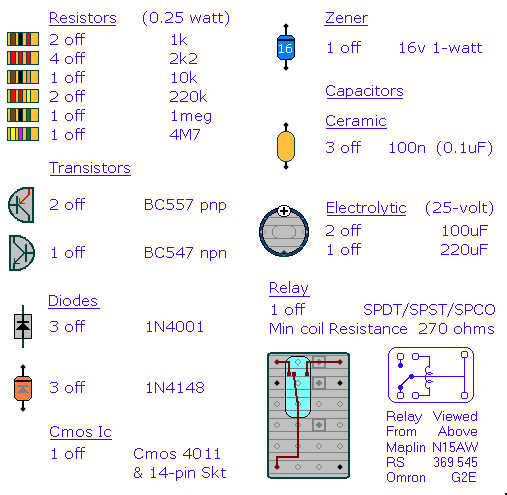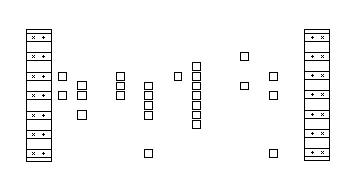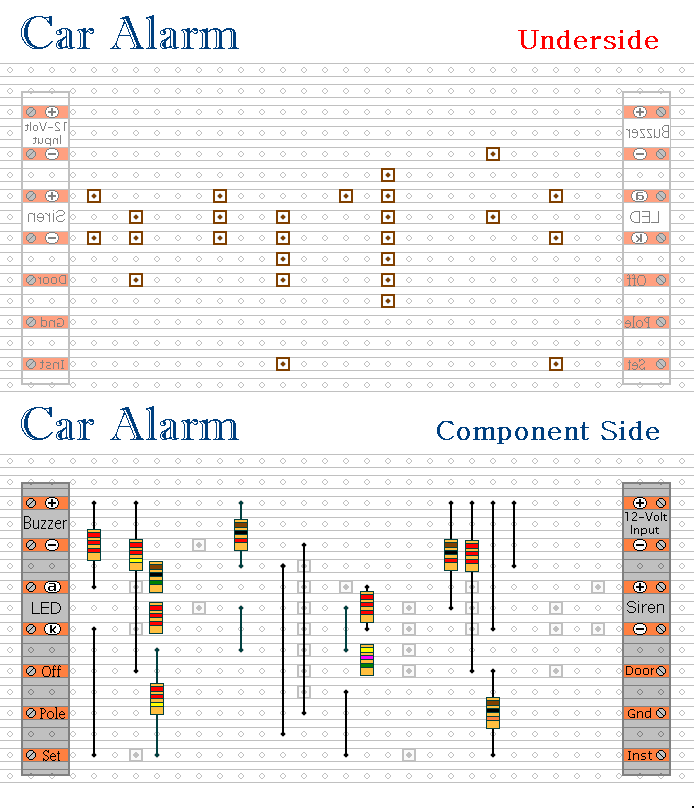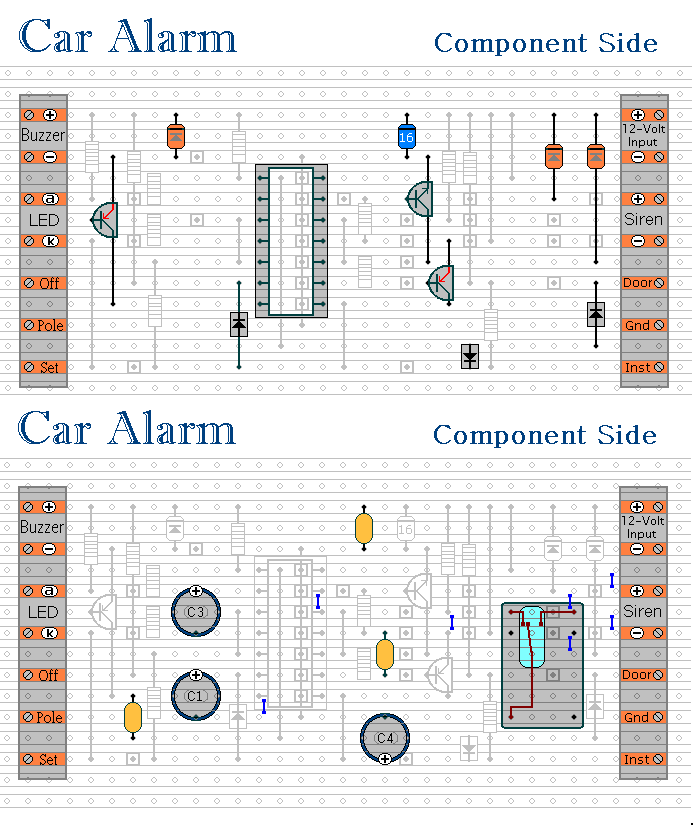Build this practical vehicle alarm circuit yourself - using cheap off-the-shelf components. It has automatic Exit and Entry delays - Intermittent Siren Output - and Automatic Reset.
Parts List

Construction Notes
Click here if you're new to constructing stripboard projects.
The terminals are a good set of reference points. To fit them, you may need to enlarge the holes slightly. Then turn the board over and use a felt-tip pen to mark the 26 places where the tracks are to be cut. Before you cut the tracks, use the "actual size" drawing to Check That The Pattern is Correctly Marked .
Actual Size Of Pattern

When you're satisfied that the pattern is right - cut the tracks. Make sure that the copper is cut all the way through. Sometimes a small strand of copper remains at the side of the cut and this will cause malfunction. Use a magnifying glass - and backlight the board. It only takes the smallest strand of copper to cause a problem. If you don't have the proper track-cutting tool - a 6 to 8mm drill-bit will do. Just use the drill-bit as a hand tool - there's no need for a drilling machine.

Next make and fit the Eight Wire Links. For the links, I used bare copper wire on the component side of the board. Telephone cable is suitable - the single stranded variety used indoors to wire telephone sockets. Stretching the core slightly will straighten it - and also allow the insulation to slip off.
The 11 resistors are all shown lying flat on the board. However, those connected between close or adjacent tracks are mounted standing upright. See The Photograph Of The Prototype
Now fit the transistors, diodes and 14-pin socket. The pnp transistors - BC557 - are those with the emitter arrow coloured red. Again, the diodes are all shown lying flat on the board. However, those connected between close or adjacent tracks are mounted standing upright. Note that one diode - D3 - points downwards.

Next fit the capacitors and relay. Pay particular attention to the orientation of the electrolytic capacitors. They generally have a light coloured stripe down the side next to the negative terminal. Note that C4 is mounted with its negative terminal facing the top of the board. See The Photograph Of The Prototype
Turn the board over and examine the underside carefully - to make sure that there are no unwanted solder bridges or other connections between the tracks. If you backlight the board during the examination - it makes potential problem areas easier to spot. When you're satisfied that everything is in order - add the 7 solder bridges.
Finally, insert the 4011 into the socket. Make sure that pin 1 is in the top left-hand corner - and check carefully that all of the pins are correctly inserted into the socket. Sometimes - instead of entering the socket - a pin will curl up underneath the IC.
 SUGGESTIONS
SUGGESTIONS
 SUGGESTIONS
SUGGESTIONS



